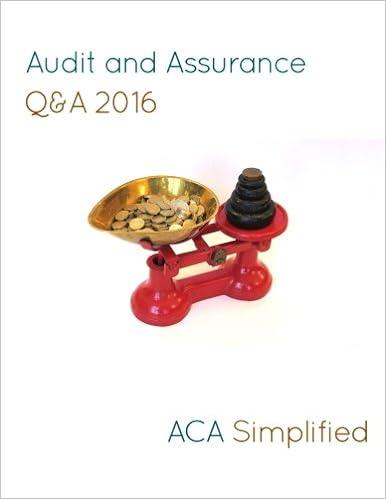Question
Below is the initial question that I posted. You answered it, but I really don't understand your explanation. Please, kindly break it down for me

Below is the initial question that I posted. You answered it, but I really don't understand your explanation. Please, kindly break it down for me in layman's terms.
In part C. of this question, for Parcel #1 why is the Corp. Basis 10k? According to 362(a), the basis for the transferee (X Corp.) the basis for the transferee should be the same as the transferor, and increased by the gain recognized. Transferor had a 5k gain recognized , therefore shouldn't the basis for the transferor be 15k instead of 10k? Also, why is the total a 5k gain, if the adj. was 15k, while the FMV was 10k? Same applies for Parcel#2, why 10k for the Corp. basis if there was a gain of 2k, and why was a 2k loss in the total column if the adj. basis was 8k while the FMV was 10k? Very Confuse
A. B. C, D and E, all individuals, form X Corporation to engage in a manufacturing business. X issues 100 shares of common stock. A transfers $95,000 cash for 25 shares; B transfers inventory with a value of $10,000 and a basis of $5,000 for 10 shares; C transfers unimproved land with a value of $2,000 and a basis of $25,000 for 20 shares; D transfers equipment with a basis of $5,000 and a value of $25,000 (prior depreciation taken was $20,000 ) for 25 shares; and E transfers a \$20,000 (face amount and value) installment note for 20 shares. E received the note in exchange for land with a $2,000 basis that he sold last year. The note is payable over a five-year (a) What are the tax consequences (gain or loss recognized, basis and holding period in the stock received) to each of the transferors? As to E, see I.R.C. 453B(a); Reg. 1.453-9(c)(2); Prop. Reg. $1.453B1(c). (b) What are the tax consequences (gain recognized, basis and holding period in each of the assets received) to X Corporation? (c) Assume all the same facts except that C transfers two parcels of unimproved land (Parcel #1 and Parcel #2), each with a value of $10,000. C's basis in Parcel #1 is $15,000 and C's basis in Parcel #2 is $8,000. What result to C and X Corporation? (d) There was $5,000 of gain inherent in the inventory transferred by B. If X Corporation later sells the inventory for $10,000, and A. B. C, D and E, all individuals, form X Corporation to engage in a manufacturing business. X issues 100 shares of common stock. A transfers $95,000 cash for 25 shares; B transfers inventory with a value of $10,000 and a basis of $5,000 for 10 shares; C transfers unimproved land with a value of $2,000 and a basis of $25,000 for 20 shares; D transfers equipment with a basis of $5,000 and a value of $25,000 (prior depreciation taken was $20,000 ) for 25 shares; and E transfers a \$20,000 (face amount and value) installment note for 20 shares. E received the note in exchange for land with a $2,000 basis that he sold last year. The note is payable over a five-year (a) What are the tax consequences (gain or loss recognized, basis and holding period in the stock received) to each of the transferors? As to E, see I.R.C. 453B(a); Reg. 1.453-9(c)(2); Prop. Reg. $1.453B1(c). (b) What are the tax consequences (gain recognized, basis and holding period in each of the assets received) to X Corporation? (c) Assume all the same facts except that C transfers two parcels of unimproved land (Parcel #1 and Parcel #2), each with a value of $10,000. C's basis in Parcel #1 is $15,000 and C's basis in Parcel #2 is $8,000. What result to C and X Corporation? (d) There was $5,000 of gain inherent in the inventory transferred by B. If X Corporation later sells the inventory for $10,000, and
Step by Step Solution
There are 3 Steps involved in it
Step: 1

Get Instant Access to Expert-Tailored Solutions
See step-by-step solutions with expert insights and AI powered tools for academic success
Step: 2

Step: 3

Ace Your Homework with AI
Get the answers you need in no time with our AI-driven, step-by-step assistance
Get Started


